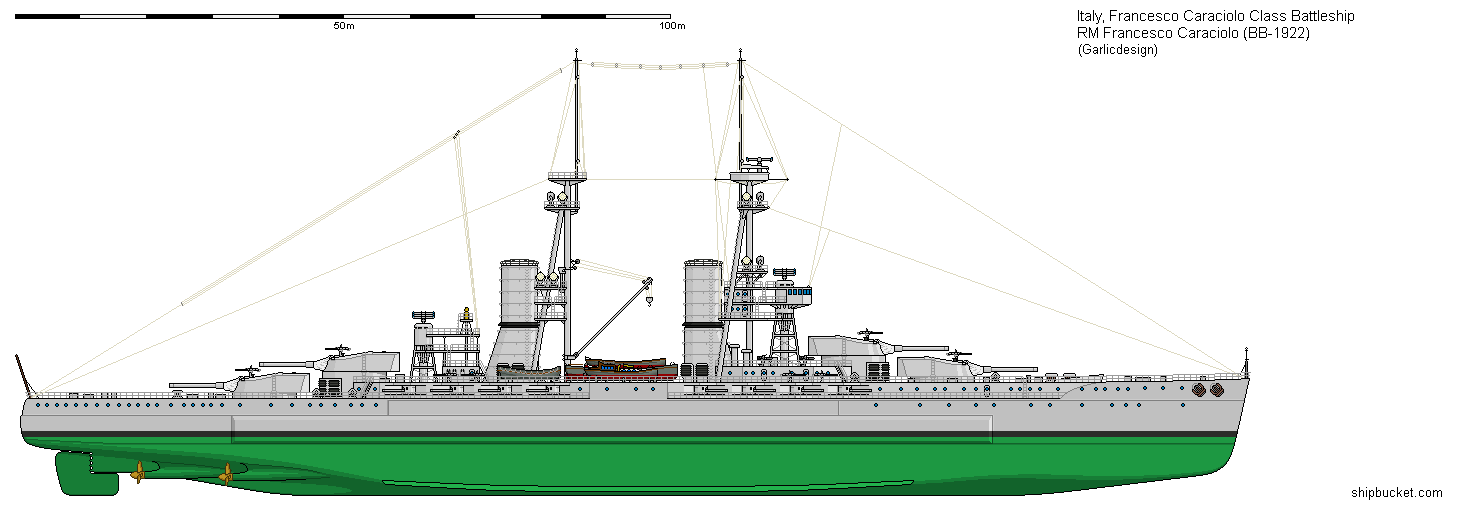| Displacement | 31,200 tons std 38,800 tons full load |
| Length | 694.5 ft |
| Breadth | 95.5 ft |
| Draught | 31 ft |
| Machinery | 4 shaft steam turbines, 100,000shp |
| Speed | 28 knots |
| Range | 4000 miles at 15 knots (1,500 nm at 27 knots) |
| Armour | 3.9" side, 2.6" deck |
| Armament | 8 x 4.7" (8x1) 14 x 37mm (14x1) |
| Aircraft | As Built: 34 fixed wing, 8-12 flying boats From 1938: 48 fixed wing |
| Torpedoes | nil |
| Complement | 1780 |
| Notes | RM Francesco Caraciolo |
I found the following drawing from Garlicdesign in my Italian
battleship section. So I did a WW2 update to add to this Caraciolo
page. The biggest difference is in the size of the ship. The real
Caraciolo is 696 feet long to GD's 615 footer. Quite a change.

Above - as completed 1922, below - as refurbished 1937-39.

I must say that having Garlicdesign's drawing to work from does
improve the quality of the finished product.
| Displacement | 28,400 tons std 32,500 tons full load |
| Length | 615 ft |
| Breadth | 96 ft |
| Draught | 31 ft |
| Machinery | 4 shaft steam turbines, 90,000shp |
| Speed | 28 knots |
| Range | 6000 miles at 15 knots (1,500 nm at 27 knots) |
| Armour | 12" side, 5.3" deck, 14" turrets. |
| Armament | 8 x 15" (4x2) 18 x 5.3" (6x3) 12 x 37mm (6x2) 16 x 20mm (16x1) |
| Aircraft | nil |
| Torpedoes | nil |
| Complement | 1680 |
| Notes | RM Francesco Caraciolo: |
Francesco Caraciolo: laid down 12 October 1914, launched 12 May 1920 - completed either 1922 or 1928 (depending on which design is chosen), Royal Naval Yard, Castellamare di Stabia


